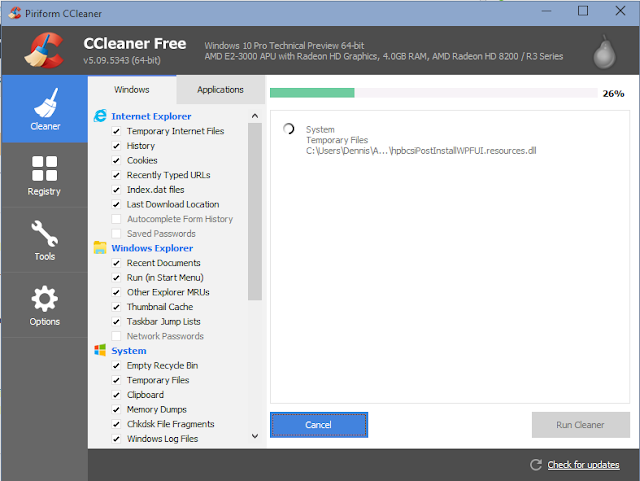1.Identify resource hungry programs
-Press CTRL +ALT+DEL to open the task manager on your Windows 10 PC.
-Click on Processes tab;You will see a list of programs,process and services that are running and their memory consumption.
-Right any programs that you do not need and choose end task.
2.Clear Junk and uninstall unwanted applications.
-I use CCleaner (Free) to clear to clear accumulated temporary internet files and windows temporary files.It is the best.
-There is no need of need of having Java installed on your computer if you do not need it.
-Uninstall all the applications you do not need to free up space and memory.If your PC hard disk is
almost full,transfer files you do not use frequently to an external hard disk to free up more space.
This will ensure programs are able to write and read from the hard disk easily.
3.Reduce Programs that start on boot.
Increase the speed of booting up and login your PC by removing applications that do not need to start on boot.
-Click on Start on your windows PC.
-SearchChoose Run.
-Type msconfig.exe and press Enter Key.
-Click OK,A dialog box will appear.
-Click Startup Tab.You will see a list of programs.Untick the applications that do not need to startup when the computer boots up.On Windows 10 click Open Task Manager.
-Click Apply and OK.Then restart your PC.
4.Run System File Checker
System file checker will repair integrity and file association issues such as wrong extensions and wrongly set default programs.It will run a check on corrupt system files and restore them.
-Click Start on your windows PC.
-On Windows 10 Search the Web and Windows type Command Prompt.
-Right Click on Command Prompt and choose Run as Administrator.
-Type sfc /scannow and press Enter key
The system will perform a check and repair of corrupt system files.






0 comments :
Post a Comment